Back in 2010 when I was evangelizing a number of friends to go Android, I hear a lot of "Why are they all doing Android? They're all the same now." True. There is very little differentiations between each brand. I wouldn't even dare think the UI skin was enough factor for differentiation for each brand. These Android devices are pretty much the same as the other with hardware (performance and handling) and shallow UI skin (aesthetics) differentiating one from the other--but slapping a LauncherPro over any of them leaves you with the same interface and possibly the almost the same experience. Given that I have tried several Android phones and a tablet last year, I can say that I do get the impression sometimes that they're almost the same and nothing differentiates one from the other so much.
Here comes 2011 and the on-going Mobile World Congress in Barcelona and everything gets a little bit more different. As predicted, 2011 will be a little more exciting than 2010 for Droids. We see manufacturers going different ways to differentiate their product line, whereas in 2010 the race was centered around making a very usable phone with a good UI overlay. Let's review each company's 2010 standing and their new flagship strategies:
Samsung
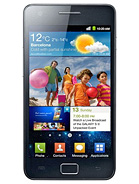 I wouldn't say Samsung was new to Android. They've been at it since late 2008 or so with their first Galaxy model donning an AMOLED screen--which unfortunately was expensive for its featureset and was stuck at Cupcake 1.5. Then after that came the Spica which got an upgrade to 2.1 and nothing more after. Then they hit it big finally in 2010 with the first Galaxy S introduced last April 2010. The strategy for Galaxy S was pretty simple: bombard all US carriers with a usable SUPER AMOLED equipped model. Galaxy S was in a nutshell a smartphone with multimedia capabilities running on a very catchy screen and that is where their new flagship Samsung Galaxy S II seems to be going for, too.
I wouldn't say Samsung was new to Android. They've been at it since late 2008 or so with their first Galaxy model donning an AMOLED screen--which unfortunately was expensive for its featureset and was stuck at Cupcake 1.5. Then after that came the Spica which got an upgrade to 2.1 and nothing more after. Then they hit it big finally in 2010 with the first Galaxy S introduced last April 2010. The strategy for Galaxy S was pretty simple: bombard all US carriers with a usable SUPER AMOLED equipped model. Galaxy S was in a nutshell a smartphone with multimedia capabilities running on a very catchy screen and that is where their new flagship Samsung Galaxy S II seems to be going for, too.
What's in the Galaxy S II? Well, it has a dual-core CPU, 1GB of RAM (Hello, MOTO Atrix), and 4.27 inches of SUPER AMOLED PLUS screen. It is quite complicated to discuss how different S-AMOLED is from S-AMOLED+ but basically S-AMOLED+ results in better image sharpness and smoothness by not using a technology they used in S-AMOLED, making it somewhat more pixel dense. Not sure I explained it very well, but that's how it is in layman's terms. And as per reviewers, S-AMOLED+ really is stunning. I do suppose so. But realizing how different my S-AMOLED SGS's screen is from my X10's LCD, the only difference I can really see is the viewing angles. X10's viewing angles are poor. But in proper viewing angles, the differences are subtle (blacks most definitely). What's another thing to be really excited about is just how thin this device is. 8.49mm. Yep, folks, 2mm thinner than XPERIA Arc announced last month at CES. This is apparently because of the S-AMOLED+ having a mere 2.1mm footprint only. 8MP camera is also included on the device and a proper LED flash is installed, too, as compared to the original Galaxy S which lacks one. As for the 8MP camera, I'm keeping my reservations as the 5MP installed on the SGS kind of struggles to get resolved detail. Maybe they'll get it right this time for the SGS II. That said, Samsung is going more for the All-in-one package route, the same route that the original Galaxy S took. Unfortunately, the price seems to be around 650 Euros or 38,000 Philippine Pesos. Yikes!
Beside the awe-inspiring Galaxy S II, Samsung has merely budget offerings, and the Galaxy Tab 10.1 running Honeycomb.
LG
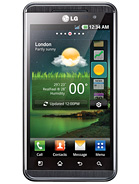 LG almost totally snubbed Android until the later part of 2010. For a proper experiment, they released the lackluster LG Optimus, which was shipped with Android 1.6 and, of all the things, a resistive screen. They were pretty silent until they released the low-end solution LG Optimus One running Android 2.2, which was the latest Android OS during the time of its launch. This placed LG somewhat as an outsider on the Android race last 2010. But then they surprised everybody last December with LG Star or LG Optimus 2X, a handset rocking a dual-core CPU. When my non-Android friend heard this, he was like, "really, they have those on phones now?" Well, it's the proper way for things to go, anyway. But we won't see any use for the dual-core CPUs until probably Q2 when dual-core utilizing apps are available to use the dual CPUs. As for now, they're like future investments and would make for awesome synthetic test results. So where is LG headed? Apparently, towards the Innovation route. They are still experimenting and having fun tossing out devices with odd features that has no competition. LG Optimus Black, again another CES debutante has an S-AMOLED-rivaling NOVA screen, which was apparently better than iPhone's IPS LCD and scores a very thin 9mm. Their flagship smartphone goes for another first: stereoscopic 3D. LG Optimus 3D goes for wow factor as it comes with a 3D UI and 5.0 MP 3D imaging and 1080P 3D video capture. It doesn't go for thinness, though as it maxes out at 11.9mm, but it's not selling that. Thing is, the 3D ships with a 2.2.1 Froyo and given that the UI has been tweaked for 3D, I wonder how long it would take for its OS to get updated. Remember, though, that LG has not yet updated any of their Android phones so this is a test for them to see how fast they can update given that this is one of the things crucial to Android folks (ask Sony Ericsson).
LG almost totally snubbed Android until the later part of 2010. For a proper experiment, they released the lackluster LG Optimus, which was shipped with Android 1.6 and, of all the things, a resistive screen. They were pretty silent until they released the low-end solution LG Optimus One running Android 2.2, which was the latest Android OS during the time of its launch. This placed LG somewhat as an outsider on the Android race last 2010. But then they surprised everybody last December with LG Star or LG Optimus 2X, a handset rocking a dual-core CPU. When my non-Android friend heard this, he was like, "really, they have those on phones now?" Well, it's the proper way for things to go, anyway. But we won't see any use for the dual-core CPUs until probably Q2 when dual-core utilizing apps are available to use the dual CPUs. As for now, they're like future investments and would make for awesome synthetic test results. So where is LG headed? Apparently, towards the Innovation route. They are still experimenting and having fun tossing out devices with odd features that has no competition. LG Optimus Black, again another CES debutante has an S-AMOLED-rivaling NOVA screen, which was apparently better than iPhone's IPS LCD and scores a very thin 9mm. Their flagship smartphone goes for another first: stereoscopic 3D. LG Optimus 3D goes for wow factor as it comes with a 3D UI and 5.0 MP 3D imaging and 1080P 3D video capture. It doesn't go for thinness, though as it maxes out at 11.9mm, but it's not selling that. Thing is, the 3D ships with a 2.2.1 Froyo and given that the UI has been tweaked for 3D, I wonder how long it would take for its OS to get updated. Remember, though, that LG has not yet updated any of their Android phones so this is a test for them to see how fast they can update given that this is one of the things crucial to Android folks (ask Sony Ericsson).
As with fellow Korean firm Samsung, LG is releasing a Honeycomb tablet along the same price as XOOM. The LG Optimus Pad or the G-Slate.
Sony Ericsson
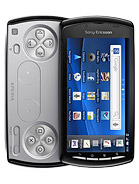 Sad as it is for an SE fan like me, Sony Ericsson lost the 2010 Android race by not being able to provide timely OS updates to their XPERIA X10 line. Their flagship XPERIA X10 was lauded and met with so much hopes when it was announced at last year's MWC. Unfortunately, it shipped with Android 1.6, unable to do multitouch, and can't perform without lags thanks to TimeScape and Mediascape tied into almost everything. That and the fact that the phones are locked to their very core relegated the X10 to casual user / SE fanboy use. Given their learnings from the X10, SE now plans to recuperate with 4 Droids. First announced last CES was the XPERIA Arc famous for its slim and elegant profile and the first one among their devices to use the Bravia Mobile Engine when you turn up your video or Internet. Sadly, the MBE does not work on the main UI and we get a simple LED backlit LCD device. MWC debutantes were the Vivaz refresh aptly called XPERIA Neo (seems to be priced around 480 Euros or 28,000 Philippine Pesos, cheapest among the bunch), XPERIA Pro (500 Euros and has a slide out QWERTY keyboard), and their main differentiator, the XPERIA Play, which is touted as the first PlayStation-certified Android device (iPhone 4 being the first Playstation certified device). The XPlay is the first of its Android class having a slide out PSP keyboard which should come nifty when you need to play games those PSP games. But that's not all, Sony Ericsson seems to be going the Gaming route via Sony NGP's gaming ecosystem. If you knew about Sony's quad-core portable gaming console from the future, the NGP, you would know that it swaps out UMD games for OTA available games via the Sony Playstation Market--which will have games playable too on Android devices. As that seems the main qualification to have games published on the PS Market, it is quite inevitable for the Xperia Play to have titles eventually, especially since it seems quite no-brainer that the NGP will succeed and sell. This formula seems to me like a proper win readying to be cashed out, whether it is just for the Playstation Market (remember as long as the device is PS-certified, they can buy stuff from the market and play with other devices like an iPhone 4 or an NGP) or the XPERIA Play, or for them both, or for the whole Android community (remember how sucky Android games are). Aren't you glad they came up with this idea? My main contention with SE's flagship is that it is too expensive at 650 Euros (same price as the SGS2 or the Sii), too bulky, and can only take 480p videos via a 5MP module. No way for a flagship to be given that the race is about thinness and video recording these days. Seems to me, SE does not really want to participate that race and would be more than glad to have compromises. Oh well. We'll see if this is another XPERIA X10 waiting to happen or a winning formula to give SE enough cash for more R&D.
Sad as it is for an SE fan like me, Sony Ericsson lost the 2010 Android race by not being able to provide timely OS updates to their XPERIA X10 line. Their flagship XPERIA X10 was lauded and met with so much hopes when it was announced at last year's MWC. Unfortunately, it shipped with Android 1.6, unable to do multitouch, and can't perform without lags thanks to TimeScape and Mediascape tied into almost everything. That and the fact that the phones are locked to their very core relegated the X10 to casual user / SE fanboy use. Given their learnings from the X10, SE now plans to recuperate with 4 Droids. First announced last CES was the XPERIA Arc famous for its slim and elegant profile and the first one among their devices to use the Bravia Mobile Engine when you turn up your video or Internet. Sadly, the MBE does not work on the main UI and we get a simple LED backlit LCD device. MWC debutantes were the Vivaz refresh aptly called XPERIA Neo (seems to be priced around 480 Euros or 28,000 Philippine Pesos, cheapest among the bunch), XPERIA Pro (500 Euros and has a slide out QWERTY keyboard), and their main differentiator, the XPERIA Play, which is touted as the first PlayStation-certified Android device (iPhone 4 being the first Playstation certified device). The XPlay is the first of its Android class having a slide out PSP keyboard which should come nifty when you need to play games those PSP games. But that's not all, Sony Ericsson seems to be going the Gaming route via Sony NGP's gaming ecosystem. If you knew about Sony's quad-core portable gaming console from the future, the NGP, you would know that it swaps out UMD games for OTA available games via the Sony Playstation Market--which will have games playable too on Android devices. As that seems the main qualification to have games published on the PS Market, it is quite inevitable for the Xperia Play to have titles eventually, especially since it seems quite no-brainer that the NGP will succeed and sell. This formula seems to me like a proper win readying to be cashed out, whether it is just for the Playstation Market (remember as long as the device is PS-certified, they can buy stuff from the market and play with other devices like an iPhone 4 or an NGP) or the XPERIA Play, or for them both, or for the whole Android community (remember how sucky Android games are). Aren't you glad they came up with this idea? My main contention with SE's flagship is that it is too expensive at 650 Euros (same price as the SGS2 or the Sii), too bulky, and can only take 480p videos via a 5MP module. No way for a flagship to be given that the race is about thinness and video recording these days. Seems to me, SE does not really want to participate that race and would be more than glad to have compromises. Oh well. We'll see if this is another XPERIA X10 waiting to happen or a winning formula to give SE enough cash for more R&D.
I also wish they have shown the new minis that have leaked a few months back--which run 1GHz processors. But those might see a post-MWC announcement, just as the first minis.
Motorola
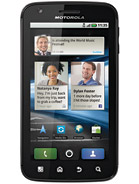 Motorola completely rose from the ashes in 2010 thanks to their Android efforts. They probably made the most Android phones among the manufacturers that it's been hard to keep track of their models: Droid, the Droid XT720, the CLIQ, the Backflip, the DROID X. Oh, the list will just go on and on. Then at CES 2011, they revealed two new phones: The Droid Bionic and the Atrix, the latter being their flagship phone for 2011. What makes the Atrix so good? Well, it has pretty much the same specs as the Galaxy S 2, save for the screen where Motorola still is stuck with LCD but graces the Atrix with a 540 by 960 resolution. So what differentiates Motorola Atrix from the rest of the Droids out there? Well, the Atrix comes with a desktop dock and a laptop dock. Come again. Yep, you heard it right, a laptop dock to put your Atrix on.
Motorola completely rose from the ashes in 2010 thanks to their Android efforts. They probably made the most Android phones among the manufacturers that it's been hard to keep track of their models: Droid, the Droid XT720, the CLIQ, the Backflip, the DROID X. Oh, the list will just go on and on. Then at CES 2011, they revealed two new phones: The Droid Bionic and the Atrix, the latter being their flagship phone for 2011. What makes the Atrix so good? Well, it has pretty much the same specs as the Galaxy S 2, save for the screen where Motorola still is stuck with LCD but graces the Atrix with a 540 by 960 resolution. So what differentiates Motorola Atrix from the rest of the Droids out there? Well, the Atrix comes with a desktop dock and a laptop dock. Come again. Yep, you heard it right, a laptop dock to put your Atrix on.
While the desktop dock will make the Atrix a desk display clock, the laptop dock will make it a, well, laptop. Or a netbook. How Motorola managed that is by using an interface between the phone and the dock that will result in the dock displaying the phone's screen / function in a different interface. Impressive sounding as it may, engadget was more than happy to buy a netbook instead for all the cost this will entail. Motorola seems to be differentiating their product by going the Personal computing route, making their phone feel closer and closer to closing the gap between smartphones and PCs.
HTC
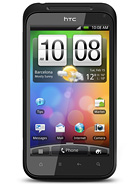 HTC had a laudable Android run in 2010. The Android veteran came up with Desire, Desire HD, Aria/Gratia, Wildfire, and Desire Z. Their timely Android updates on their units plus top-notch user experience gained them the goodwill of many patrons who turned in and became fans. Many looked at the experienced company as the role model for Android manufacturing, with HTC Desire being praised by techradar as the top GSM Android phone of 2010. So it was logical to anticipate what they have been up to. For all the hype and supposed leaks that have come out since they showed the world that they can throw out a Desire HD and Desire Z out of whim, the products they presented on the MWC was pretty underwhelming.
HTC had a laudable Android run in 2010. The Android veteran came up with Desire, Desire HD, Aria/Gratia, Wildfire, and Desire Z. Their timely Android updates on their units plus top-notch user experience gained them the goodwill of many patrons who turned in and became fans. Many looked at the experienced company as the role model for Android manufacturing, with HTC Desire being praised by techradar as the top GSM Android phone of 2010. So it was logical to anticipate what they have been up to. For all the hype and supposed leaks that have come out since they showed the world that they can throw out a Desire HD and Desire Z out of whim, the products they presented on the MWC was pretty underwhelming.
First up, they announced two smallish Facebook button-totting phones, the ChaCha and Salsa. These much rumored "Facebook phones" were merely Android devices with tight FB integration and an FB button, both are not very ambitious phones. If those weren't underwhelming enough, HTC announced the successor to their Wildfire line. The Wildfire S features almost exactly the same specs as the old Wildfire, but sports a 3.2" screen. As for their flagships Desire S and Incredible S, HTC decided to go again for the user-experience route, completely ignoring hardware this time around as the Desire S and Incredible S both feature almost identical hardware with their predecessors. The Desire S gets an Adreno 205 GPU, as with other MWC 1GHz debutantes (which makes for better gaming, imaging, and video playback) and a unibody aluminum case. It also ships with Gingerbread too. Other than that, changes are subtle. The Incredible S is almost basically the same as the CDMA Incredible in America save for the auto-rotating capacitive buttons. This one however ships with a Froyo, which is kind of a shame considering the Wildfire S is sent to the world with a Gingerbread.
It is also worth noting that HTC has a tablet that comes with a capacitive pen. This tablet however runs Gingerbread and is built around HTC's Sensation skin for tablets and the capacitive pen. Other than that, it is your typical iPad-killer, proving even more that HTC, for this MWC could care less about hardware and is really going for the kill by providing useful and usable software on their Android models. Same-same, they don't want to stray away from their smartphone ideas.
Non-Droids: Nokia

Oh how the mighty have fallen! Nokia's 2010 sales still put them on top of the manufacturers' list but how their sales have hit a slump and if anything, it's taking them quite some effort to recover. Not only that, majority of what got them to top is not their high-end sales, but their low-end and mid-end offerings, which has the same functions and features--signs of a company refusing progress. To remedy this, last Feb11, Nokia and MicroSoft announced a partnership that may change the whole game: Nokia to soon dump Symbian and/or MeeGo plans and make Windows Phone 7 As their main smartphone strategy. While that is something that we are yet to see if it will have any success, market experts predict it is a good partnership and would give Nokia and MicroSoft the coverage they need. Nokia will have a software platform that is as usable ans Android and iOS and WP7 will see greater sales by being carried by the biggest mobile phone manufacturer. Sounds good? Probably not as good when we look back that this partnership between Palm and Windows Mobile killed Palm. But who knows, Windows Phone 7 is tons smarter than Windows Mobile.
At the MWC, it was made clear that that partnership's goal is to defeat Android. Quite ambitious, isn't it? Images of the Microkia concept devices has since been floating around the web after the partnership was announced. How this partnership will go is yet to be seen, but it's a pretty exciting combination of powers. Now we wonder, will Windows Phone ever gain the prominence they are dreaming? What will happen to Symbian and MeeGo? All that and more are yet to be seen and 2011 now seems pretty exciting.
Non-Droids: Apple
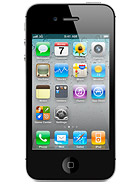 The MWC felt like an alliance more than a fight, actually. All these manufacturers gearing up to demolish Apple's dominance on the smartphone race. And what choice does the Cupertino giant have but fight back. New rumors have been swirling outside of MWC about Apple making a smaller iPhone so far being dubbed over the net community as the iPhone Nano. Speculations began from early leaks of information from trusted tipsters and the fact that Apple sourced affordable smartphone materials from Samsung. Several rumors about it have been spreading since then, but the most controversial being its lack of local storage relying completely on cloud-based apps and music service, which I find pointless for most developing countries--which I think is the target of this cheaper device. Engadget thinks this is a possibility but not a technology people of 2011 might be up to accept. Given that the iPhone Nano will be a cheaper alternative for those who can't afford real deal iPhones, teens and developing countries come to mind, save that a cloud service would cost so much more than what you have actually saved.
The MWC felt like an alliance more than a fight, actually. All these manufacturers gearing up to demolish Apple's dominance on the smartphone race. And what choice does the Cupertino giant have but fight back. New rumors have been swirling outside of MWC about Apple making a smaller iPhone so far being dubbed over the net community as the iPhone Nano. Speculations began from early leaks of information from trusted tipsters and the fact that Apple sourced affordable smartphone materials from Samsung. Several rumors about it have been spreading since then, but the most controversial being its lack of local storage relying completely on cloud-based apps and music service, which I find pointless for most developing countries--which I think is the target of this cheaper device. Engadget thinks this is a possibility but not a technology people of 2011 might be up to accept. Given that the iPhone Nano will be a cheaper alternative for those who can't afford real deal iPhones, teens and developing countries come to mind, save that a cloud service would cost so much more than what you have actually saved.
Other than the iNano, the iPhone 4 successor rumors of having a bigger 4" screen has also been circulating. Other rumors include an 8MP camera module and a slide out keyboard (mostly targeting business-minded people). The idea of having more than one iPhone model for the next generation is a pretty exciting idea, don't you find? Given all these, 2011 seems much more exciting than 2010 for Mobile consumers and connoseurs.
Non-Droids: HP (Palm)
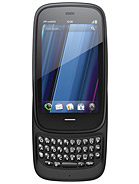 In case you've been living under a rock you would have missed the whole MWC, Nokia-Microsoft partnership and Pre's revival. Pre 2 which was met with much lukewarmth last year finds a worthy successor under the Pre 3 hood. Complains of the Pre 2's underwhelming specs were reworked with much success and zeal on the Pre 3--which is equipped with a 1.4GHz CPU and 512 RAM, pretty much ready to blow away your standard high-end Android smartphone. And while those specs do not match the dual-core might of LG, Samsung, and Motorola, the Pre 3 that runs Web OS 2.2 has additional skills other smartphones wish they have. It can communicate with the WebOS tablet! Yep, there's a WebOS tablet, too, which is another reason for HP to celebrate. And the way WebOS is being worked to make all HP appliances talk seamlessly seems like a good thing especially after seeing the Pre 3 and WebOS tablet talk.
In case you've been living under a rock you would have missed the whole MWC, Nokia-Microsoft partnership and Pre's revival. Pre 2 which was met with much lukewarmth last year finds a worthy successor under the Pre 3 hood. Complains of the Pre 2's underwhelming specs were reworked with much success and zeal on the Pre 3--which is equipped with a 1.4GHz CPU and 512 RAM, pretty much ready to blow away your standard high-end Android smartphone. And while those specs do not match the dual-core might of LG, Samsung, and Motorola, the Pre 3 that runs Web OS 2.2 has additional skills other smartphones wish they have. It can communicate with the WebOS tablet! Yep, there's a WebOS tablet, too, which is another reason for HP to celebrate. And the way WebOS is being worked to make all HP appliances talk seamlessly seems like a good thing especially after seeing the Pre 3 and WebOS tablet talk.
Other than the Pre3 and the WebOS tablet, the HP Veer was also announced last week, Feb 10, which made the X10 mini pro, the world's currently smallest smartphone with a keyboard, shy. Veer comes in with a much smaller at 15mm of thickness. It would be interesting to see how this new slew of WebOS devices perform.
2011 Outlook
Given the range of developments from manufacturers, 2011 is another exciting year for Mobile consumers and enthusiasts. Android has garnered enough support and attention while Windows Phone 7 has found an ally in Nokia which should make the competition look like Android vs. iOS vs. WP7 vs. WebOS vs. RIM. We'll be seeing how each platform stock up against the other with Android mainly being about diversity and iOS being about ease of use and conformity. Wp7 and others are yet to make their minds, but as it looks like other manufacturers are backing away from the Mobile OS and concentrating on the Android battlefield. It is also worth noting that Sony Ericsson has not presented any tablet. Rumors are that it won't. Ever. And that the Android tablet will be from Sony with a PlayStation branding (not VAIO). How this will look is yet to be figured out. Also, let's not forget about RIM's Playbook which has been lauded, too. And of course the iPad 2--which is not a 1st gen device (thus worth looking into) and is rumored to have a front-facing camera and a usb port for plugging in those sticks.
Ain't 2011 so exciting?
No comments:
Post a Comment